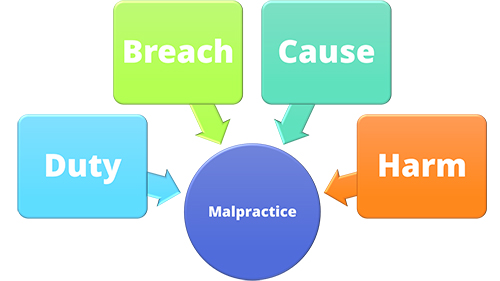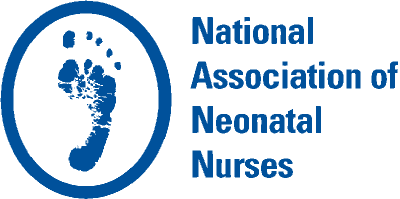Feature
Navigating the Legal Landscape: An Examination of Medical Malpractice Suits Involving Nursing Professionals
Tosha Harris, DNP, APRN, NNP-BC
Medical malpractice suits involving nursing professionals are a complex and sensitive area of healthcare law. Nurses play a crucial role in patient care, and their actions and decisions can profoundly affect patient outcomes. As such, when errors or negligence occur, patients may pursue legal action to seek compensation for damages.
These suits not only impact the individuals involved but also have broader implications for the nursing profession.
A malpractice suit is a civil court proceeding brought against a healthcare provider by a former patient or a member of the patient's family for alleged harm done while the patient was under the provider's care. The harm can be physical injury or illness, economic loss, emotional damage, or a combination.
The suit alleges that the provider caused harm by failing to perform their professional duties competently and that this failure was a departure from the standard of care owed to the patient. The standard of care is the customary and expected practice of those professionals in the same field in the community, treating similar patients.
In recent years, nursing practice has increasingly become the focus of civil litigation, including malpractice suits and licensure hearings. The reasons for the increase in nursing malpractice suits include wide variations in the scope and quality of nursing practice, the rise of consumerism in health care, and aggressive marketing by lawyers who primarily represent plaintiffs in personal injury, medical malpractice, and product liability cases.
Every 5 years, CNA and Nurses Service Organization (NSO), both of which are insurance companies, conduct a detailed analysis of nursing claims and lawsuits to identify the areas of highest concern and assist nurses in preventing these issues.
The dataset, published in 2022, reported that the neonatal specialty represented the highest average claim costs for nurse practitioners ($627,333), followed by the pediatric specialty ($408,767), and the behavioral health specialty ($381,409) (CNA & NSO, 2022.)
Medical Malpractice Allegations
Medical malpractice suits can arise from a variety of situations. Some common types of medical malpractice suits include:
- Misdiagnosis or Delayed Diagnosis: A healthcare provider fails to diagnose a condition correctly or promptly, leading to delayed or improper treatment.
- Failure to Treat and Treatment Errors: Patient harm results from a provider failing to provide necessary treatment or follow-up care or prescribing the wrong treatment for a clinical condition.
- Surgical Errors: These errors include mistakes during surgery, such as wrong-patient surgery, wrong-site surgery, damaging nearby organs or tissues, removing healthy organs or tissues, amputation injuries, or leaving foreign objects in the body.
- Medication Errors: This may encompass prescribing the wrong medication, incorrect dosage, failing to consider a patient's allergies or other medications, administering too much or too little anesthesia, failing to monitor the patient properly during anesthesia, or not considering the patient's medical history.
- Birth Injuries: Untoward actions that occur during labor and delivery, including injuries to the baby, such as cerebral palsy, or to the mother, such as excessive bleeding.
- Lack of Informed Consent: When a healthcare provider fails to adequately inform the patient of the risks and benefits of a treatment or procedure, the patient suffers harm.
- Wrongful Death: Provider negligence or error directly causes the death of a patient. (Bieber, 2023)

According to Bal (2009), to succeed in a medical malpractice suit, the plaintiff (the patient or their representative) generally needs to prove the following elements:
Duty of Care: The plaintiff must show that the healthcare provider owed them a duty of care. A doctor-patient or provider-patient relationship typically establishes this duty.
Breach of Duty: The plaintiff must demonstrate that the healthcare provider breached the standard of care owed to the patient, meaning the provider's actions or omissions deviated from what a reasonable healthcare provider would have done in similar circumstances.
Causation: The plaintiff must establish that the breach of duty directly caused the patient's injury and show that the injury would not have occurred without the provider's actions or omissions.
Harm: The plaintiff must prove they suffered harm because of the healthcare provider's actions or omissions. This harm can include physical pain, emotional distress, additional medical expenses, lost wages, or other losses.
In medical malpractice cases, the patient must provide evidence to establish that the provider's negligence caused them harm. However, it's important to note that not all unfavorable outcomes are due to medical malpractice. Providers cannot be held responsible for all outcomes when there is already a possibility of an adverse outcome. Therefore, the plaintiff must demonstrate that it is more likely than not that the doctor's negligence directly caused the unfavorable outcome. In medical malpractice situations, "harm" refers to permanent damage caused by negligence.
What Practitioners Need to Know
If you ask any long-time neonatal nurse or nurse practitioner, they will tell you, "If you practice long enough, chances are you will be named in a lawsuit." While the malpractice suit process can be complex and daunting, nurses must understand their role. As healthcare providers, we are often the first line of defense in a malpractice suit, and our actions and documentation can significantly impact the outcome. Practicing our craft in today's healthcare climate requires that we arm ourselves with this knowledge.
The legal claim process is divided into three phases: the pre-suit notice period, the life of a lawsuit, and the trial (Berry, 2001). The process begins before the provider is aware of the action. During the prefiling investigation, the potential plaintiff consults with an attorney to discuss a possible malpractice claim. The attorney then investigates the claim to determine whether sufficient evidence supports a lawsuit.
The pre-suit notice period will begin if the attorney believes a valid claim exists. The provider will receive a notice letter from the plaintiff's attorney in this initial stage. This letter is not a lawsuit and is not filed with the court. It notifies the physician of potential claims against them and should be taken seriously.
If you are advised of a lawsuit, it is crucial to inform your malpractice insurer promptly. Failure to do so could result in a loss of coverage, leaving you personally liable for any damages awarded. Regardless of your belief in the case's merit, involving your insurer is necessary. They will provide legal counsel, and doing so could ensure your coverage is maintained.
Once notice is received, it may be tempting to conduct your investigation, particularly if you provided care for the patient many years ago. However, be aware that this could have serious repercussions. Electronic medical records can track patient chart access, so it's crucial to maintain the chart in its original condition without any modifications, alterations, or deletions. Any changes to the chart could be misinterpreted as wrongdoing and could harm your case if a lawsuit is filed. Similarly, discussing the claim with peers, family, or friends could pose a risk. These conversations could be used against you in a lawsuit. It's best to limit discussions to your insurance carrier and lawyer.
The second phase of the process is initiated by filing a petition in court and serving the petition on the provider, who now becomes the defendant. During this phase, several actions will take place:
Discovery: Both parties gather evidence to support their case, exchange documents such as medical records and expert reports, and conduct and share depositions of witnesses, including the plaintiff, defendant, and expert witnesses (American Bar Association, 2021; Berry, 2001)
Expert Review: Medical malpractice cases often require expert testimony to establish the standard of care and causation. Both parties may consult medical experts to review the case and provide opinions on the healthcare provider's actions (Berry, 2001).
Mediation or Settlement Negotiation: Before going to trial, the parties may attempt to resolve the case through mediation or settlement negotiations. Doing so can help avoid the time and expense of a trial and reach a mutually acceptable resolution (Berry, 2001).
If the case does not settle, it will proceed to trial. It may take several years before a lawsuit reaches this phase. The length of the process can vary depending on the complexity of the case, the jurisdiction, and other factors.
During the trial, both parties present evidence and arguments to a judge or jury, who will determine if the healthcare provider is liable for malpractice and, if so, the damages to be awarded. The lawsuit is resolved when a settlement is reached, a verdict is rendered at trial, or the case is dismissed.
Malpractice Case Outcomes
In the event of a settlement or an unfavorable judgment, it is crucial to understand the extent of coverage provided by your malpractice insurance. Reviewing your insurance policy with an agent focusing on coverage for damages is advisable.
Nurses who have faced a court defeat may lose their license or have it suspended if a formal complaint is filed with the state Board of Nursing. Pilla (2021) states that notifying your insurer and securing legal representation is crucial if a formal complaint is filed with the Board of Nursing . You have the right to defend your license, and a favorable verdict in court can help you do so by demonstrating adherence to your state’s Nurse Practice Act. Even if the malpractice suit was unsuccessful, mounting a solid defense during disciplinary hearings can mitigate consequences.
A malpractice suit can be incredibly stressful and anxiety-inducing. The uncertainty of the outcome, the potential damage to one's reputation, and the financial implications can all contribute to stress. Providers may experience guilt or self-doubt, wondering if they could have done something differently to prevent the adverse outcome. This can be particularly challenging when caring for patients is a core part of their identity and values.
It’s common to feel anger or resentment toward the legal system, the patient, or their family for initiating the lawsuit. These emotions can intensify if the provider believes the suit is unjustified or based on misunderstanding. The fear of not knowing what will happen can be compounded by concerns about the impact on your career and future. Providers may feel isolated or stigmatized, especially if the lawsuit becomes public knowledge. They may need help with how their colleagues, patients, and community will perceive them and how to rebuild their professional reputation if necessary.
The emotional toll of a malpractice suit can spill over into providers' personal lives, affecting their relationships, mental health, and overall well-being. Resolving the lawsuit, whether through settlement or trial, can bring relief or closure but also regret or sadness.
It's vital for healthcare providers facing a malpractice suit to seek support from colleagues, friends, family, or mental health professionals to help navigate these emotional challenges and initiate a path to recovery. This support can make you feel understood and less isolated during this challenging time.
References
Bal, B. S. (2009). An introduction to medical malpractice in the United States. Clinical Orthopaedics and Related Research, 467(2), 339–347. https://doi.org/10.1007/s11999-008-0636-2
Bieber, C. (2023, June 15). What is medical malpractice? Definition & examples. Forbes Advisor. https://www.forbes.com/advisor/legal/personal-injury/medical-malpractice/
Berry, D. B. (2001). The physician’s guide to medical practice. Baylor University Medical Center Proceedings, 14(1), 109–112. https://doi.org/10.1080/08998280.2001.11927742
CNA & Nurses Service Organization (2022). Nurse practitioner professional liability exposure claim report: 5th Edition. https://www.nso.com/Learning/Artifacts/Claim-Reports/Minimizing-Risk-Achieving-Excellence
Pilla, L. (2021, October 5). Facing State Board of Nursing (SBON) complaints: Making your case and mitigating your risk. Daily Nurse. https://dailynurse.com/facing-state-board-of-nursing-sbon-complaints-making-your-case-and-mitigating-your-risk/

